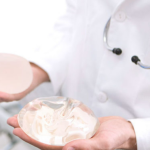Understanding Breast Cancer Symptoms: Early Detection and Awareness
Breast cancer is a significant health concern that affects both women and men, although less commonly, men. Early detection is key to successful treatment and improved outcomes. As a leading ultrasound clinic, we are dedicated to raising awareness about breast cancer symptoms to empower individuals to prioritize their breast health. In this article, we will explore the common symptoms of breast cancer and emphasize the importance of regular screenings.
Common Breast Cancer Symptoms:
Lump in the Breast or Underarm:
The most common symptom of breast cancer is the presence of a lump or mass in the breast or underarm. While not all lumps are cancerous, any new lump or change in the breast tissue should be promptly evaluated by a healthcare professional. It’s important to note that some breast cancers can be felt but not seen on imaging.
Changes in Breast Size, Shape, or Appearance:
Breast cancer may cause visible changes in the breast, such as swelling, dimpling, or distortion of the breast contour. These changes can occur due to the growth of a tumor affecting the surrounding tissue.
Unexplained Nipple Discharge:
Nipple discharge, other than breast milk, is a symptom that should not be ignored. Discharge can be bloody, clear, or any other color. While most nipple discharge is not cancer-related, it warrants further evaluation.
Skin Changes on the Breast:
Breast cancer may cause changes in the skin texture or appearance. These changes can include redness, rash, scaliness, or puckering. In some cases, the skin may resemble the texture of an orange peel.
Nipple Changes:
Changes in the nipple, such as inversion (pulling inward), flaking, or a change in direction, may be indicative of an underlying issue, including breast cancer.
Pain or Discomfort:
While breast cancer is not always painful, persistent discomfort or pain in the breast or nipple area should be investigated, especially if it’s unusual and doesn’t seem related to the menstrual cycle.
Importance of Self-Exams and Clinical Exams:
Regular breast self-exams and clinical exams are essential for early detection. Self-exams involve checking your breasts regularly for any changes or abnormalities. Clinical exams are conducted by healthcare professionals and may include visual and manual examinations of the breasts and underarms.
Private Breast Ultrasound Scan
The Role of Imaging:
Mammography and ultrasound imaging are valuable tools for detecting breast cancer, especially in its early stages. Mammograms use X-rays to capture detailed images of the breast tissue and can often identify abnormalities before they can be felt. Ultrasound, on the other hand, uses sound waves to create images and is particularly useful for evaluating lumps, distinguishing between cysts and solid masses, and guiding biopsies.
Risk Factors and Screening Guidelines:
It’s important to be aware of breast cancer risk factors and adhere to recommended screening guidelines:
Age and Gender: The risk of breast cancer increases with age, and women are at higher risk than men.
Family History: A family history of breast cancer, especially among close relatives, can increase the risk.
Genetic Mutations: Mutations in genes such as BRCA1 and BRCA2 can significantly elevate the risk of breast cancer.
Hormone Replacement Therapy: Prolonged use of hormone replacement therapy may increase the risk.
Personal History: Having a personal history of breast cancer or certain non-cancerous breast diseases may increase the risk.
If you notice any changes in your breast health or have concerns about breast cancer symptoms, don’t hesitate to contact our clinic for a comprehensive evaluation. Your well-being is our priority, and we are here to provide the support and care you need on your journey to maintaining breast health.



